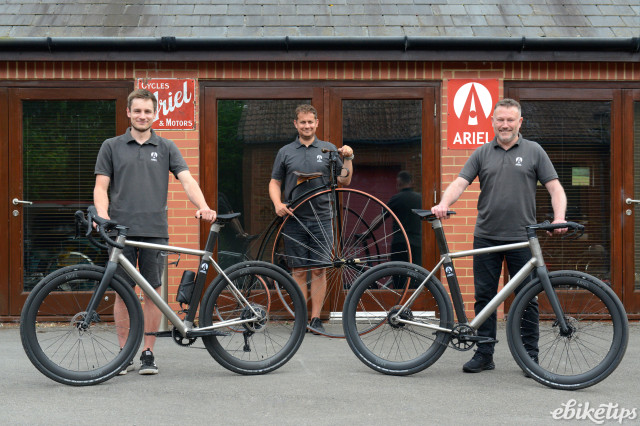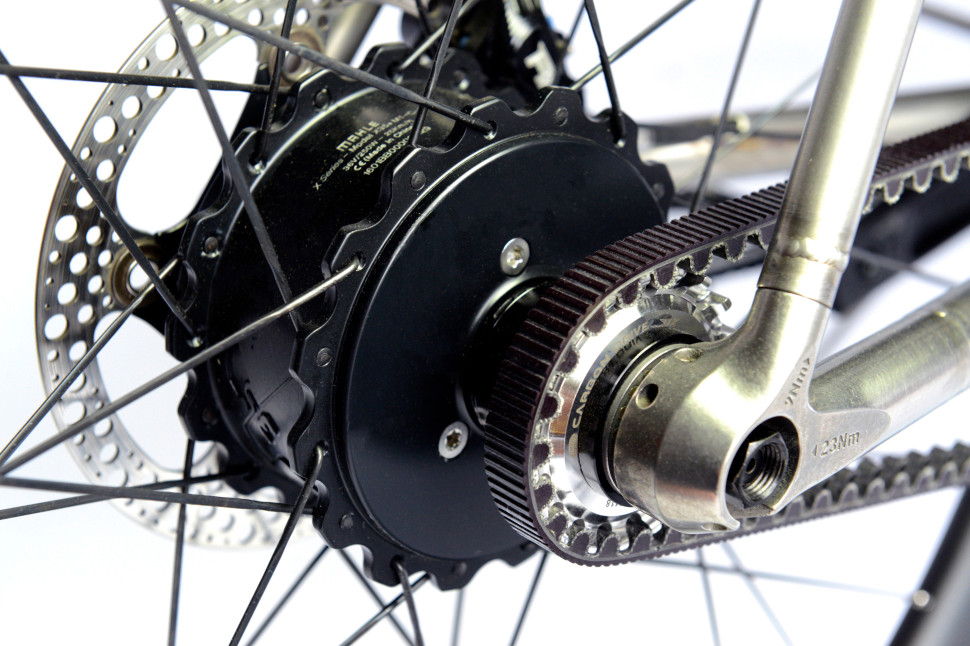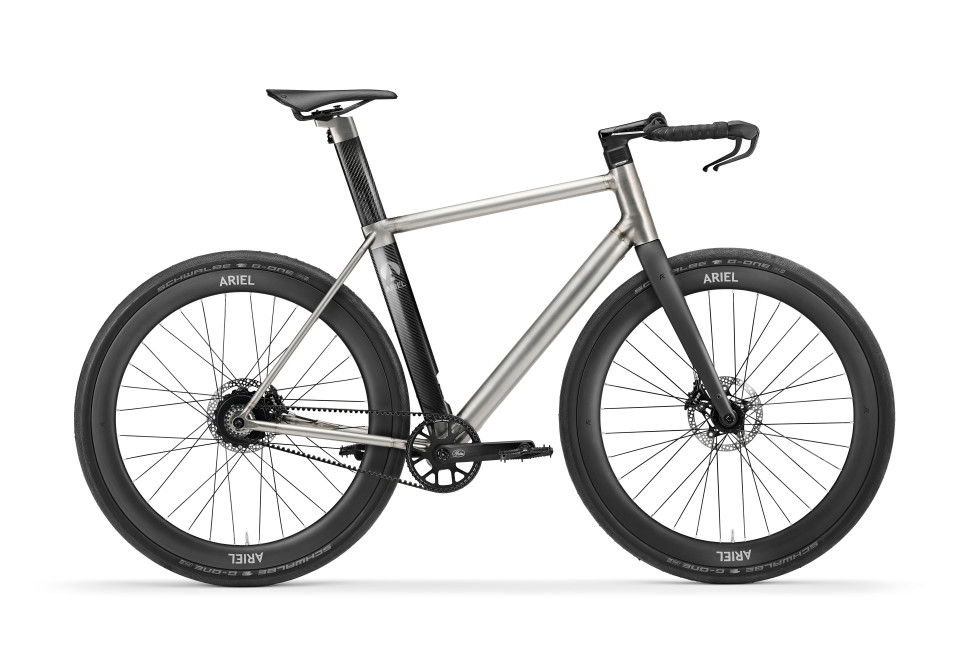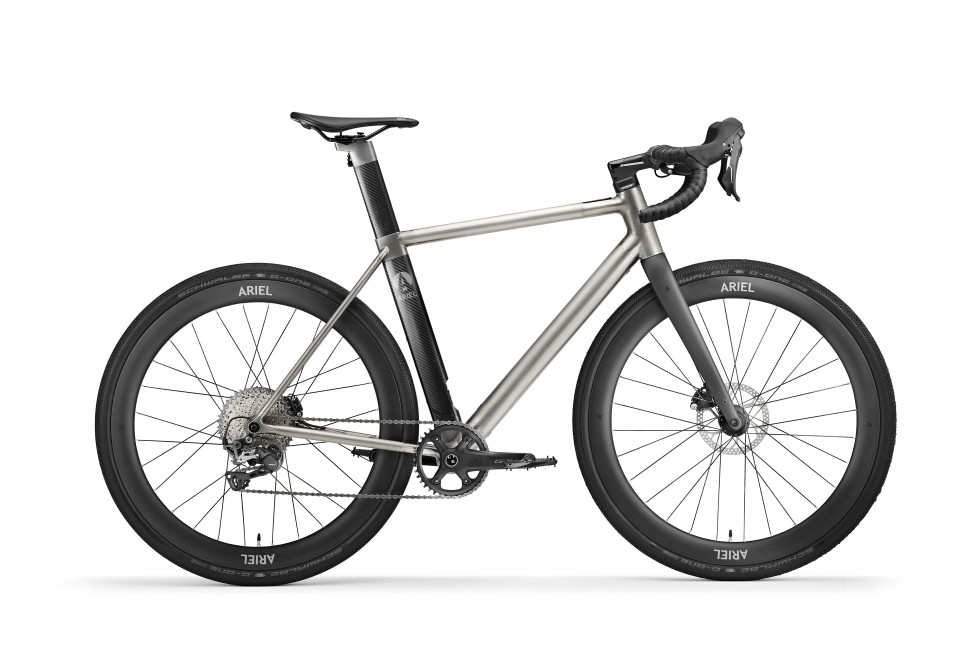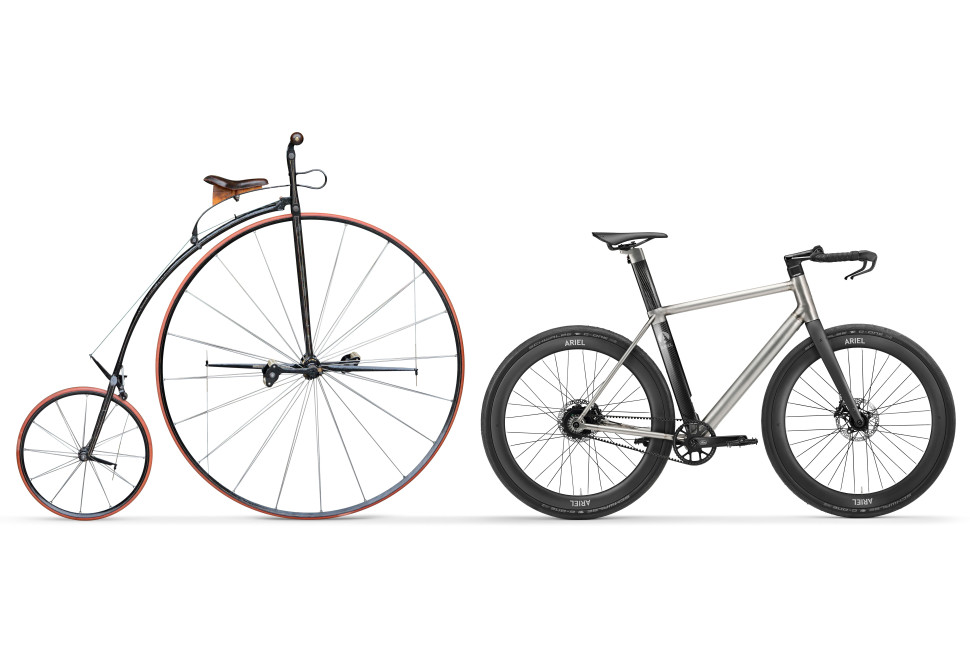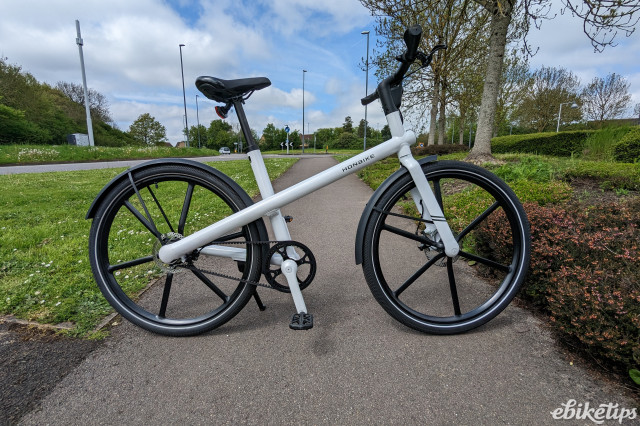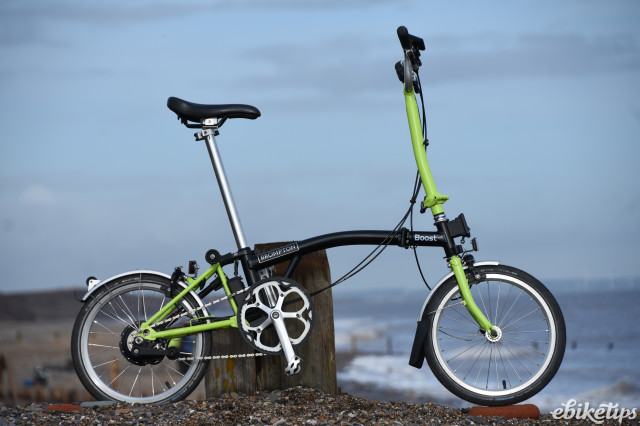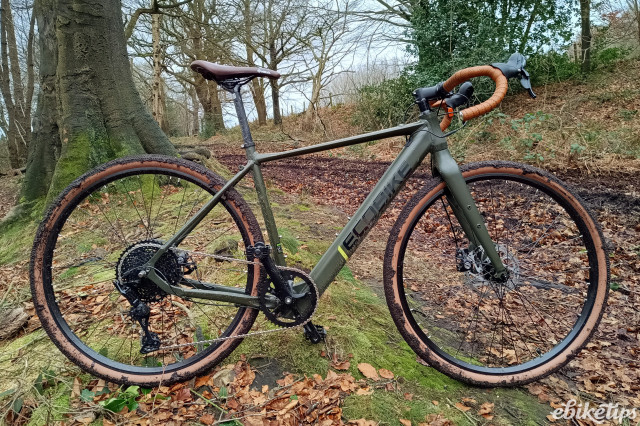Ariel Motor Company has today launched an e-bike – a striking-looking, 3D-printed affair called the Ariel Dash. This lightweight Mahle hub motor model represents a somewhat unexpected return to bicycle manufacturing for the firm after the small matter of a 92-year hiatus.
Ariel’s history in bike production is, um, more historic than most. The James Starley designed Ariel Ordinary – described by the firm as the world’s first production vehicle – was introduced in 1871.
A couple of years later, the first hour record distance was (arguably) set by James Moore on one. (The 14.5-mile mark is thought to have only been approximated.)
However, the last Ariel bicycles were manufactured in 1932 when the firm narrowed its attention to motorcycles before subsequently expanding its offering to cars as well.
Since 2000, the firm’s range has spanned a couple of cars, the Atom and Nomad; a motorbike, the Ace; and more recently the high performance electric sports car, the HIPERCAR EV.
But now there’s an e-bike.
The Ariel Dash
Built around Mahle hub motor systems (X35+ for the Urban version and X20 for the Adventure), the Ariel Dash is a slick-looking beast with minimal external cabling and either a Gates Belt Drive (Urban) or 12-speed Shimano GRX gears (Adventure).
In both models, the battery is internal (250Wh for the Urban version, 236Wh for the Adventure) with Mahle’s range extenders also available.
At a claimed weight of 10.9kg the Dash is decidedly light for an e-bike, thanks to its 1.3kg frame made from 3D-printed titanium, titanium tube, and carbon fibre. Each bike will be hand-assembled and signed-off by a single Ariel technician.
The use of different materials is said to allow Ariel to exactly specify the characteristics for each element.
For example, titanium was chosen as the main frame material due to its strength to weight density, while the carbon fibre seat tube and seat post, “allowed Ariel to ‘tune’ the parts with directional quasi-isotropic layers of material for a combination of lightness, stiffness and comfort between the seat and bottom bracket.”
Great news for fans of seat posts that employ directional quasi-isotropic layers, we’re sure you’ll agree.
It sounds like things have moved on a bit from the Ariel Ordinary (which of course they have, because that was 150 years ago).
Commenting on the bike, Ariel director, Simon Saunders, said: “The importance of the Ariel Ordinary cannot be underestimated. It is essentially the first mass production vehicle of any kind and marked the very beginning of the automotive industry.
“We’re lucky to have Ordinary number 47 in our collection, from the first year of production in 1871, and I think Starley would be impressed by the technology used in making the Dash, particularly printing titanium from a computer.”
The Urban version of the Ariel Dash is available for £9,984, while the Adventure version will sell for £10,992.
More details over at Ariel’s website.
